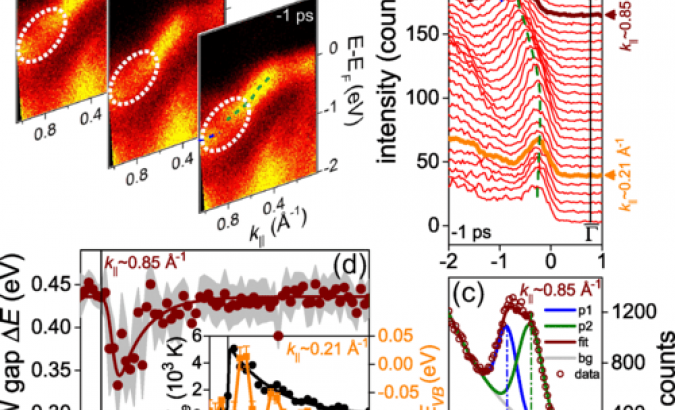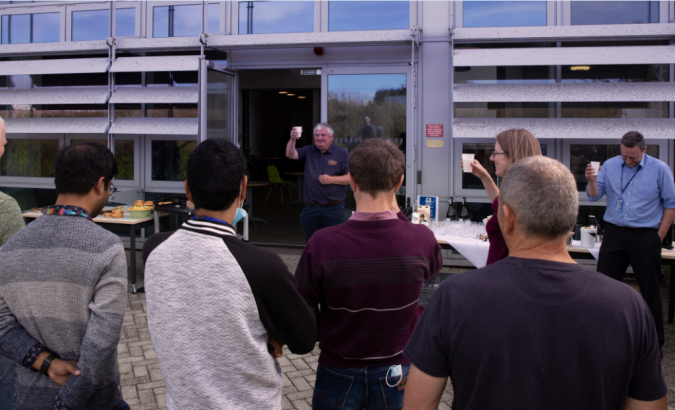CLF Octopus Principal Investigator Professor Stan Botchway tells us about his career.
| Fact File | |
| Current Position | UKRI-STFC Fellow (Individual Merit) |
| Background | Biophysics Principle Investigator in DNA damage/mTOR signalling pathway and Quantum Biology |
| Accolades | Fellow of the Royal Society of Chemistry |
1. Please tell us about your journey.
My first degree was Chemistry followed by a Radiation Biology PhD, both at University of Leicester with a Master’s degree at University of Bristol. I carried out a 3rd year research project with Prof Martyn Symonds who encouraged and invited me to do a PhD. However, I ended up doing my PhD with an excellent supervisor, Prof Peter O’Neil at both the MRC Harwell and University of Leicester. Following a Postdoctoral fellowship at Harvard Medical School, developing advanced imaging techniques towards understanding radiation effects, I was offered a laser microscopist lead position within the Central Laser Facility, which is part of the Science and Technology Facilities Council (STFC). Ten years later, the group moved to the RCaH in 2009. In fact, I helped to design the biolabs in the RCaH as well as my current imaging lab!
2. What are you working on at the moment and how has the pandemic affected your research?
I am currently investigating three main research areas: 1) DNA damage and repair; 2) the protein known as mechanistic target of rapamycin (mTOR) which regulates many functions in our body, such as cell growth (and cancer), controls adiposity, memory, immunity, and aging. My research focuses on how this protein complex regulates other proteins using advanced imaging, a technique called FLIM. 3) That same technique can be applied to the area of quantum biology. I have secured a three-year funding to combine these research areas- protein function and quantum biology.
3. You lead a team. How do your colleagues help you become a more creative researcher?
I am part of a team as well as a PI- no person is an island! As they say, a team is only as good as its members. The overall Lasers for Science facility (including Octopus- advanced imaging and Ultra- advanced Time resolved spectroscopy) comprises of individuals with backgrounds in physics, chemistry and molecular biology as well as astronomers and data analysis scientists. This is a unique combination to find in the same group. Hence our output is greater than the sum of our parts. It is refreshing to know there is always someone in the team who will have an idea or a solution to a problem that needs resolving. It is an impressive group.
Trying to create this level of collaboration in a university setting would be complex due to the nature of departments of different disciplines being physically separated but here at Research Complex, the beauty is that we are all under one roof which makes such exciting collaboration easy and accessible.
4. How does being based at Research Complex help your work?
Being in the Research Complex has very much accelerated my personal research as well as those of my external collaborators. One example is working with what was the Protein Production, UK and is now part of the Rosalind Franklin Institute. Prof Ray Owens and his team help train my Masters’ and PhD students in advanced cloning, generating tagged proteins that we needed extremely quickly, and this saved us many months of trial and error, as well as time and money! Being part of the Central Laser Facility means I also work across the different disciplines within the Research Complex.
For example, I introduced Prof Andy Beale to the use of the advanced Imaging FLIM technique to imaging operando catalysis processes. This was a very successful programme which led to a number of publications in high profile journals such as this paper in Nature: Scientific Reports. One publication in Angewandte Chemie even made it to the cover of a journal. Trying to create this level of collaboration in a university setting would be complex due to the nature of departments of different disciplines being physically separated but here at Research Complex, the beauty is that we are all under one roof which makes such exciting collaboration easy and accessible.
5. What has been the impact of your research?
My research has benefitted hugely in three main ways, by working in a facility environment (as a facility lead), pursuing personal research, and the opportunity to collaborate with scientists from varied backgrounds and disciplines. I have therefore learnt a lot from the different collaborators which has allowed me to bring fresh ideas to my work.
Working with Chemists, Biologists and Laser Scientists, we were able to show how a cell environment changes when it is damaged. This has had significant implications for how drugs work and how cells communicate with other cells. We have also developed new ways of understanding the environment of cells, again using novel chemical probes with unique properties, such as phosphorescence instead of fluorescence imaging (please see our paper in Nature Chemistry and our paper in Proceedings of the National Academy of Sciences of the United States of America (PNAS)). The probes mentioned here and others in molecular biology (the mTOR project) have been licensed to the companies Merck-Sigma and CRUK-Ximbio and are now for sale and distribution to other scientists, which in turn has increased economic impact for the UK. It is refreshing to receive requests from other scientists for products from my publications. I am also glad that protein constructs from my work, distributed by CRUK-Ximbio is a non-profit organization. Also the two key publications above have had nearly one thousand citations to date.
It is refreshing to receive requests from other scientists for products from my publications. I am also glad that protein constructs from my work, distributed by Ximbio (CRUK) is a non-profit organization.
6. Does your teaching and research motivate and influence each other? Do you continue to get research ideas from your work and incorporate your ideas into your teaching?
I very much enjoy training and teaching (practicals) both the undergraduate and project students during their time at Research Complex as they always make me think about research ideas from new perspectives. Especially with PhD students, there always comes a time (often in their final year) when you can bounce off ideas and they are not afraid to offer new angles and suggestions for the research direction. I have so far trained ten PhD and several Masters students and I very much enjoy the interactions. Although each student is different, past students always make me a better supervisor for the next through constant learning from what worked and what could be done differently.
7. What has been the most surprising thing to come from your work?
Fairly early on in my career, we published a peer review article on the virus that causes bird flu. This was picked up by several media outlets including Radio Oxford and the BBC Six O’Clock News. Considering this wasn’t what I considered one of my most exciting datasets or publications, the media thought otherwise. It ended up with me talking about the work on the BBC News, which was mildly amusing. More recently (June 2021) a publication from one of my PhD students was picked up by the Telegraph. Again, this is not one of the highest profile publications from my research. I wish I knew what is likely to make popular headlines!
8. Finally, your work in three words?
Exciting, rewarding and fun.








